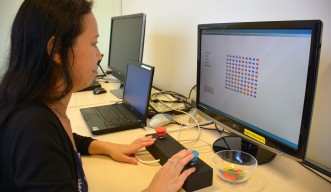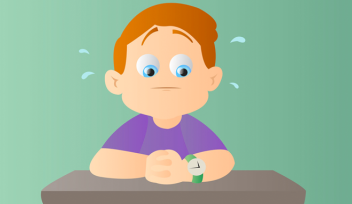The Rules of the Game for Children with ADHD

Children with Attention Deficit Hyperactivity Disorder (ADHD) often display behaviours that are inappropriate for the situation in which they are in. They might move around in the classroom during a lesson, or talk non-stop and interrupt others’ conversations. ADHD is a neuro-developmental disorder that affects about 5% of children. Despite a considerable amount of research over many years, the causes of ADHD are still debated. A team of researchers from Japan and New Zealand has published a paper in the Journal of Child Psychology and Psychiatry that may help to explain the difficulties children with ADHD experience in adapting their behaviour to given situations.
“All of us tend to repeat those actions that get rewarded,” said Prof Gail Tripp, one of the authors of the paper and director of the Human Developmental Neurobiology Unit at the Okinawa Institute of Science and Technology Graduate University (OIST). “That’s how we learn: we do the things that have a positive outcome for us.” Even if the rules to get rewarded are rarely stated, the majority of us seamlessly move between different settings, adapting our behaviour to maximize the chances to get – socially – rewarded. For example, we behave differently during a lunch break than in a lab meeting even if we are dealing with the same group of people.
However, children with ADHD struggle to match their behaviour with the surrounding context. The scientists studied this issue exploring how children with ADHD behave when they play a game that has rules that change slightly, without explanation. The researchers tested 167 English-speaking children, aged between 8 and 13, in Japan and New Zealand. More than half of these children were diagnosed with ADHD. All the children played a simple game in which they had to decide if there were more blue or red faces on the screen in front of them. The screen showed a ten by ten grid full of mixed blue and red faces, and the children had just to hit a blue or red button according to the predominant colour they saw on the screen.
The game had some specific rules. The researchers explained to the children that they were going to be rewarded, with verbal praise and a plastic token, when giving the right answer, but only sometimes and not each time they gave the correct answer. During the game, the children were first rewarded four times more often for correct ‘blue’ answers. Then, after 20 rewards, the game started to reward the children more often for correct ‘red’ answers. Finally, after another 20 rewards, the game switched back to reward more frequently ‘blue’ answers. The rewarding system was not explained to the children.
The experiment showed that, initially, the children developed a bias for blue: when in doubt, the children started to give the answer that was rewarded more often during the first part of the game. However, when the rewarding system switched to red, differences began to emerge among the children. Typically developing children started showing a clear bias for red, while children with ADHD shifted only slightly their answers towards red.
Furthermore, when the rewarding system reverted back to blue, the gap in behaviour widened. Typically developing children went back to favour blue, while children with ADHD almost did not change their answers’ pattern. Hence, as the rewarding system swapped between blue and red, the children had to intuitively adapt to maximize their chances to get a reward. The data suggests that children with ADHD were not as good as typically developing children at responding to such un-signalled changes.
“I am really excited about this research, because I think it has important implications for how we manage the behaviour of children with ADHD,” Prof Tripp commented. “What we argue is that, for these children, we need to make explicit what the requirements are in any given situations. So, we are not relying on them to identify what the conditions are, but we are actually explicitly telling them: this is what you will be rewarded for. And we also need to tell them when we are no longer going to reward them for that.”
Children with ADHD are not naughty children. They may appear to misbehave and they may appear not to follow the rules, but this research suggests that this happens because they are not picking up on subtle rules changes. “Explaining the requirements in any given situation, and rewarding them accordingly, is not spoiling them,” Prof Tripp concluded. “It is a good parenting strategy. It is about trying to give them the same life opportunities.”
Specialties
Research Unit
For press enquiries:
Press Inquiry Form
















